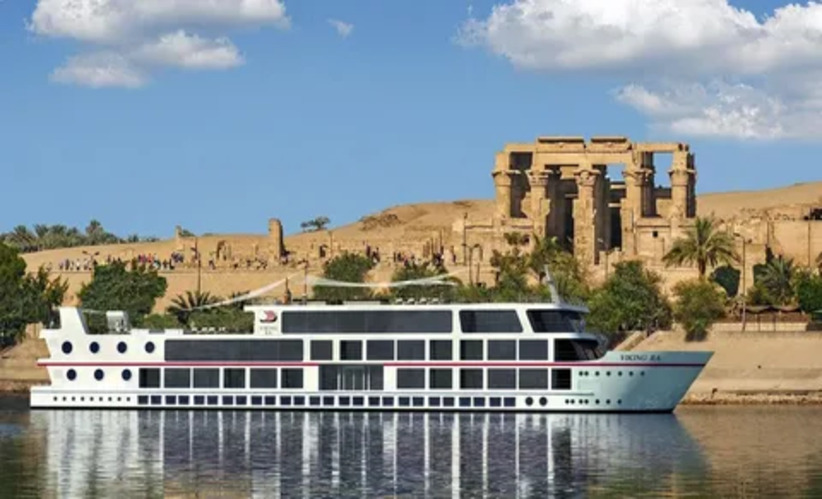
Instructions: Explore 7 Iconic Tourist Attractions in Egypt
Tourist attractions in Egypt hold a truly remarkable collection of landmarks that transcend time, continually captivating visitors with glimpses into its storied past. The varied culture and history spanning millennia come alive through iconic structures and sites scattered across this enchanting land. As one of the most historically and culturally significant destinations globally, Egypt presents tourists with not seven but countless wonders meriting exploration.

In the present day, visitors have the remarkable opportunity to delve into the remnants of Alexandria’s illustrious past. Places like the Alexandria National Museum stand as custodians of a rich history, housing an array of captivating artifacts that offer a tangible connection to the city’s bygone eras. Nearby, Pompey’s Pillar rises majestically in the heart of the city, an enduring monument to an ancient world. The ongoing excavations at the site of the Great Library evoke a sense of awe and curiosity as if the very foundations of knowledge are being unearthed once more.
As one navigates the bustling streets, lined with inviting bars, cafes, and seafood restaurants, a vibrant and distinct modern cultural energy permeates the air. It’s as if the echoes of Alexandria’s storied past harmoniously coexist with the pulsating rhythm of the present.
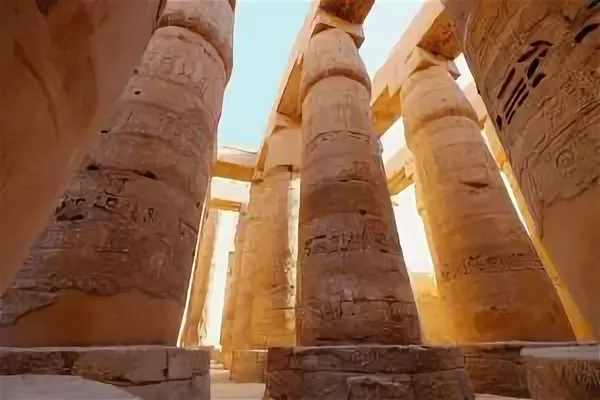
Yet, the city’s allure extends beyond its historical treasures. Alexandria’s eastern coastline boasts exquisite beaches and waters of astonishing clarity, drawing visitors into a realm of natural splendor. Here, beneath the gentle caress of the sun’s rays, or amidst the invigorating embrace of the sea, one can bask in a sense of serenity that transcends time.
The title of “Bride of the Mediterranean” bestowed upon Alexandria finds its resonance in captivating sites like Qaitbay Fort. Perched at the water’s edge, the fort provides not only a glimpse into the city’s maritime heritage but also unrivaled vistas of the harbor and its sentinel lighthouse. An afternoon saunter along the corniche promenade offers a leisurely immersion into Alexandria’s coastal charm, where the interplay of sea and land paints a picturesque tableau.
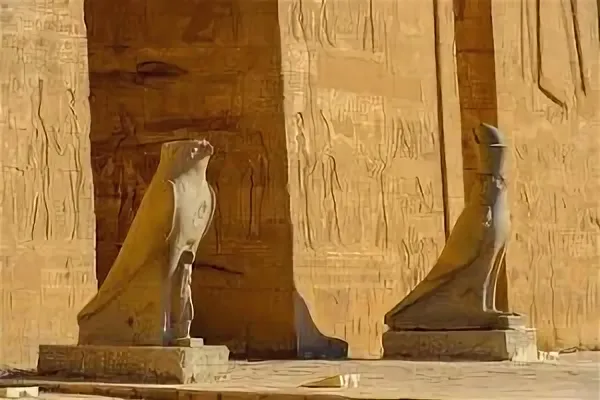
In every corner of this city, where the past and present intertwine in a dance of cultural richness and natural splendor, Alexandria invites explorers to partake in its multifaceted narrative. It is a place where time, in all its fluidity, reveals itself as an ever-flowing river, carrying with it the echoes of ancient grandeur and the vibrant pulse of today.
1. The Great Pyramids of Giza
Undoubtedly the most famous landmarks in Egypt, the Pyramids of Giza are among the oldest of the Seven Wonders of the Ancient World. Located on the west bank of the Nile River just outside Cairo, the three main pyramids at Giza are immense structures that were built over 4,500 years ago as tombs for pharaohs Khufu, Khafre, and Menkaure and their queens during the Old Kingdom.

The Great Pyramid of Khufu, also known as the Pyramid of Cheops, is the largest of the three pyramids and the only surviving structure among the original Seven Wonders of the Ancient World. It stands at an amazing 147 meters tall and was the tallest man-made structure in the world for over 3,800 years. Inside the pyramid, narrow corridors and chambers help support its immense weight and size.
The second pyramid, which is slightly smaller than Khufu’s pyramid, belonged to the pharaoh Khafre. Next to it stands the relatively smaller Pyramid of Menkaure, which is 67 meters tall. In addition to the iconic pyramids, the Giza plateau is also home to the equally impressive Sphinx, a sculpted limestone statue with the body of a lion and the head of a man, thought to be a depiction of the pharaoh Khafre.

Tourists flock to Giza from all over the world to see these iconic landmarks that have withstood the test of time. For those interested in ancient Egyptian architecture and history, a visit to the pyramids is a must to witness their sheer scale up close. Tours of the pyramids provide insight into how they were constructed using basic tools and manpower over decades. Witnessing sunrise or sunset from the Giza plateau, overlooking the pyramids and Cairo, is truly breathtaking.
2. The Egyptian Museum
Located in Cairo, the Egyptian Museum houses the world’s largest collection of Pharaonic antiquities. With over 150,000 artifacts on display across its many galleries, the museum provides an incredible look into Egypt’s rich ancient past. Some of the most prized treasures housed here include King Tutankhamun’s solid gold funeral mask, jewelry, and other artifacts from his tomb. Other notable items include the Narmer Palette, which documents some of the earliest Egyptian history, and Ramses II’s commemorative scarab beetle pendant.

The Egyptian Museum is one of Cairo’s most visited attractions, giving history and archaeology buffs a front-row seat to admire and learn about precious artifacts dating back thousands of years. Highlights include mummies, sarcophagi, jewelry, weapons, sculptures, and more—all offering a glimpse into the religion, funerary practices, and everyday lives of ancient Egyptians. While many pieces await restoration following damage in past conflicts and the January 2011 revolution, the museum remains the best place to immerse oneself in Egypt’s illustrious ancient history.
3. The Great Temple of Abu Simbel
Located in southern Egypt on the western bank of Lake Nasser, the Abu Simbel temple complex is one of Egypt’s most impressive monuments from the New Kingdom period. Constructed in the 13th century BC, the enormous rock-cut temple was designed as a lasting monument to the mighty pharaoh Ramesses II and his wife Nefertari. What makes Abu Simbel truly iconic is its unique architecture and imposing facade. Two massive seated statues of Ramesses overlook the temple entrance, totaling about 21 meters high.

The complex is composed of two temples: the Great Temple, aligned to the sunrise on February 22nd and October 22nd, marking the king’s sed festivals; and the Small Temple, dedicated to the deified queen Nefertari. Awe-inspiring bas-relief carvings of battles and pharaohs receiving tribute from defeated nations adorn the sandstone walls inside. Perhaps even more impressive is the elaborate system of tunnels and inner chambers built to capture and direct beams of sunlight into the temple’s holy of holies on extremely precise dates.
When the Aswan High Dam was built in the 1960s, portions of the temples would have been submerged underwater. In a massive feat of engineering, UNESCO coordinated an international effort to cut both temples into 100-ton blocks and reassemble them on a man-made plateau 64 meters higher and 300 meters from their original positions. Today, Abu Simbel remains one of Egypt’s most popular destinations, celebrating the vision and grandeur of Egypt’s New Kingdom rulers.
4. Alexandria
Founded in 331 BC by Alexander the Great, Alexandria sits on the Mediterranean coast and is Egypt’s second-largest city, with over 5 million residents. Alexandrians are proud of their city’s rich history as a center of learning and trade. In Hellenistic and Roman times, Alexandria was a major destination renowned for its Great Library and Lighthouse, one of the Seven Wonders of the Ancient World.

For individuals with a deep-seated fascination for history, archaeology, and a curiosity that extends far beyond their own cultural boundaries, the inclusion of Egypt in their travel plans becomes an unmistakable and compelling choice. The country’s rich tapestry of meticulously preserved monuments stands as a testament to its enduring allure, drawing in millions of visitors year after year. Each meticulously crafted structure, every ancient artifact, speaks volumes about the astounding achievements and marvels of this cradle of civilization.
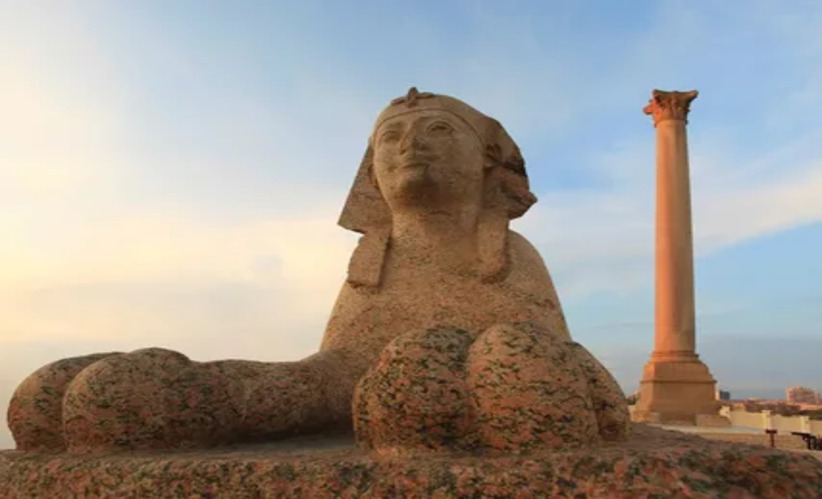
Walking amidst the towering pyramids or gazing upon the enigmatic Sphinx, one can’t help but feel a profound connection to the bygone eras that have shaped human civilization. It is an experience that transcends time and space, a journey through the annals of history itself. Egypt’s attractions are more than mere structures; they are living, breathing testaments to the ingenuity and artistry of ancient cultures.
The impact of witnessing these awe-inspiring sites firsthand is transformative. It kindles a deeper appreciation for the trials, triumphs, and innovations of those who came before us. It is a powerful reminder that our present is intricately woven into the fabric of the past. This encounter with history in the very places where it unfolded can leave an indelible mark on the soul.

Moreover, the allure of Egypt’s tourist attractions often serves as a catalyst for future explorations. The insatiable appetite for understanding, for unraveling the mysteries of ancient civilizations, is ignited. Visitors depart Egypt not only with memories of a remarkable journey, but with an insistent whisper of what other wonders lie in wait for them across the globe.
In this enchanting and history-steeped land, one doesn’t merely observe the past; they immerse themselves in it. They become a part of a continuum that stretches back millennia, and in doing so, they gain a profound understanding of the intricacies and complexities that have shaped our world. Egypt is not just a destination; it is an odyssey through time itself.
5. Luxor (Thebes)
Tourist Attractions in Egypt Aptly called the “World’s Greatest Open Air Museum,” Luxor has been Egypt’s top archeological hotspot for centuries. Situated on the east bank of the Nile River, Luxor’s sprawling temples and necropolises make it a must-see for anyone fascinated by ancient history. The breathtaking Karnak Temple Complex north of Luxor includes enormous pylons, halls, and obelisks spanning over 2,000 years of architectural featsTourist Attractions in Egypt.

Tourist Attractions in Egypt Across the Nile River lies the West Bank, home to the iconic Valley of the Kings Necropolis, where Tutankhamun and other pharaohs’ tombs were carved into limestone cliffs. The experience of exploring tombs like those of Seti I or immortalized in Howard Carter’s discovery of Tutankhamun’s intact treasure trove gives a glimpse into the afterlife beliefs and funerary arts of New Kingdom Egypt. Also worth visiting is the Colossi of Memnon, two massive seated limestone statues representing Pharaoh Amenhotep III that have withstood 3,400 years of weathering.
Luxor offers an unmatched density of monuments representing Egypt’s imperial period. Wandering its sites helped bring the most glorious periods of Egyptian civilization under Hatshepsut, Thutmose III, Amenhotep III, and Seti I to vibrant life. With its abundance of well-preserved temples, tombs, and antiquities, Luxor remains Egypt’s historically richest city tourist Attraction in Egypt.
6. Island of Philae (Agilika Island)
Tourist Attractions in Egypt The serenely beautiful island of Philae is located in Aswan between the First and Second Cataracts of the Nile River. Famed for its Greco-Roman-era Temple of Isis, this tiny island dotted with palm trees was engulfed after the construction of the Aswan High Dam in 1970. A painstaking international effort relocated Philae’s monuments to nearby Agilkia Island in the early 1960s to save them from being submerged Tourist Attractions in Egypt.
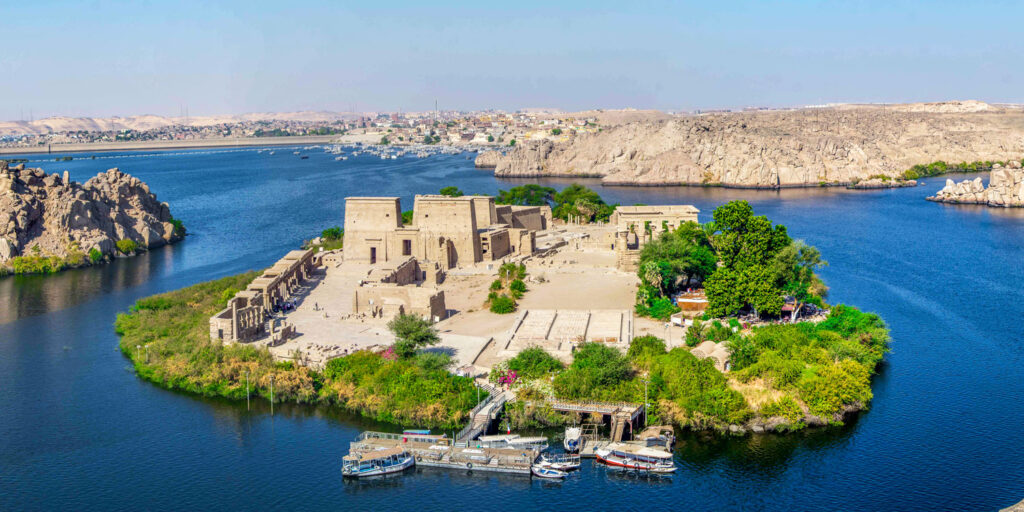
Here, Tourist Attractions in Egypt visitors can admire Philae’s iconic structures, like the first pylon gateway and the beautiful temple complex dedicated to Isis, nestled amid lush gardens and views of feluccas floating by. Marvel at elaborate carvings of deities and hieroglyphic inscriptions spanning 250 years of Ptolemaic and Roman rule that show Egypt’s cosmopolitan fusion during this eraTourist Attractions in Egypt.
Tourist Attractions in Egypt Philae enchants travelers with its scenic Nilotic setting and a palpable sense of serenity. The call to worshippers persisted for over 1,500 years until 394 AD, giving Philae its reputation as a site of pilgrimage for pagans long after Egypt’s Christian conversion in the 4th century CE. Its preservation was a landmark victory for the protection of cultural heritage worldwide that allows future generations to experience Philae’s splendors.
7. Abu Mena
Tourist Attractions in Egypt Just 25 kilometers from Alexandria and bordering the Western Desert, Abu Mena is among Egypt’s most rewarding, lesser-known attractions for those interested in Coptic and early Christian history. Tourist Attractions in Egypt The magnificent basilicas and structures on this site date back to the 1st century AD, making Abu Mena one of the earliest Christian settlements in the world. According to historians, Abu Mena developed as an important pilgrimage site after Saint Menas’s martyrdom and contains five ancient churches built between the 4th and 13th centuries AD.
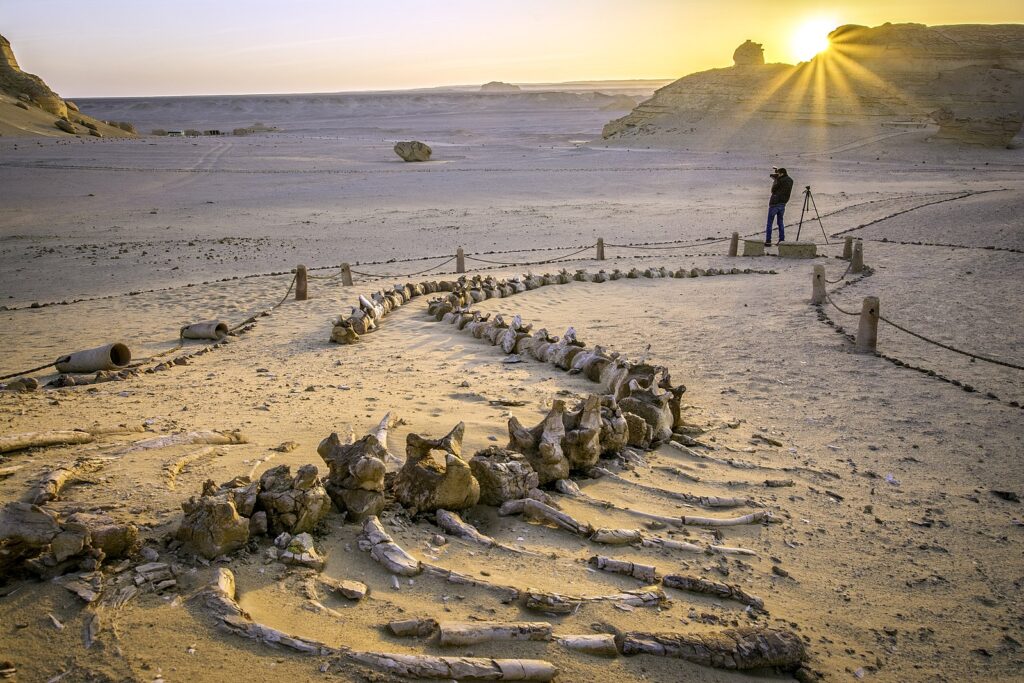
Tourist Attractions in Egypt The most prominent buildings include the Great Basilica of Abu Mena with extensive mosaic floors and the Small Basilica, which contains one of the oldest icons of Saint Mena in existence. Wandering through the churches and among fields of wildflowers, visitors feel a genuine connection to the early believers who worshipped hereTourist Attractions in Egypt. As Dr. Amina Abdel Halim of Cairo University notes, “Abu Mena gives extraordinary insight into Egypt’s Christian cultural roots, rarely explored by tourists.” With its diverse architecture and abundant tranquility, Abu Mena rewards those who venture beyond Alexandria’s coastal attractionsTourist Attractions in Egypt.
Conclusion:
Tourist Attractions in Egypt A journey to Egypt is a unique chance to rediscover the origins of some of the world’s most extraordinary civilizations. From the enigmatic allure of the Pyramids and Sphinx to the tranquil spirituality of Abu Simbel, the famous sites mentioned above provide just a glimpse into the vast treasures of this endlessly captivating destination. Each location unveils a new chapter in Egypt’s story, turning a tour through the landmarks of this North African nation into a remarkable voyage through the pages of history Attractions in Egypt.

For individuals with a deep-seated fascination for history, and archaeology, and a curiosity that extends far beyond their own cultural boundaries, the inclusion of Egypt in their travel plans becomes an unmistakable and compelling choice. The country’s rich tapestry of meticulously preserved monuments stands as a testament to its enduring allure, drawing in millions of visitors year after year. Each meticulously crafted structure, every ancient artifact, speaks volumes about the astounding achievements and marvels of this cradle of civilization.
Walking amidst the towering pyramids or gazing upon the enigmatic Sphinx, one can’t help but feel a profound connection to the bygone eras that have shaped human civilization. It is an experience that transcends time and space, a journey through the annals of history itself. Egypt’s attractions are more than mere structures; they are living, breathing testaments to the ingenuity and artistry of ancient cultures.

The impact of witnessing these awe-inspiring sites firsthand is transformative. It kindles a deeper appreciation for the trials, triumphs, and innovations of those who came before us. It is a powerful reminder that our present is intricately woven into the fabric of the past. This encounter with history in the very places where it unfolded can leave an indelible mark on the soul.
Moreover, the allure of Egypt’s tourist attractions often serves as a catalyst for future explorations. The insatiable appetite for understanding, for unraveling the mysteries of ancient civilizations, is ignited. Visitors depart Egypt not only with memories of a remarkable journey but with an insistent whisper of what other wonders lie in wait for them across the globe.
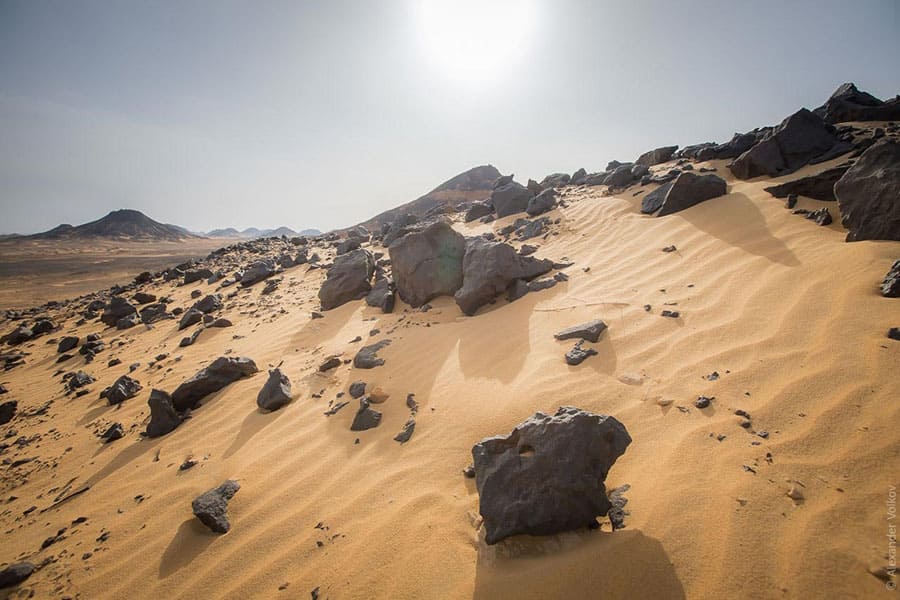
In this enchanting and history-steeped land, one doesn’t merely observe the past; they immerse themselves in it. They become a part of a continuum that stretches back millennia, and in doing so, they gain a profound understanding of the intricacies and complexities that have shaped our world. Egypt is not just a destination; it is an odyssey through time itself.

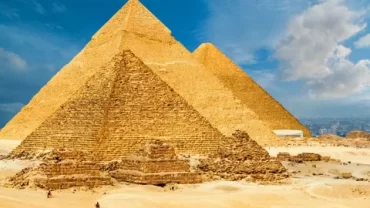



Comment (0)